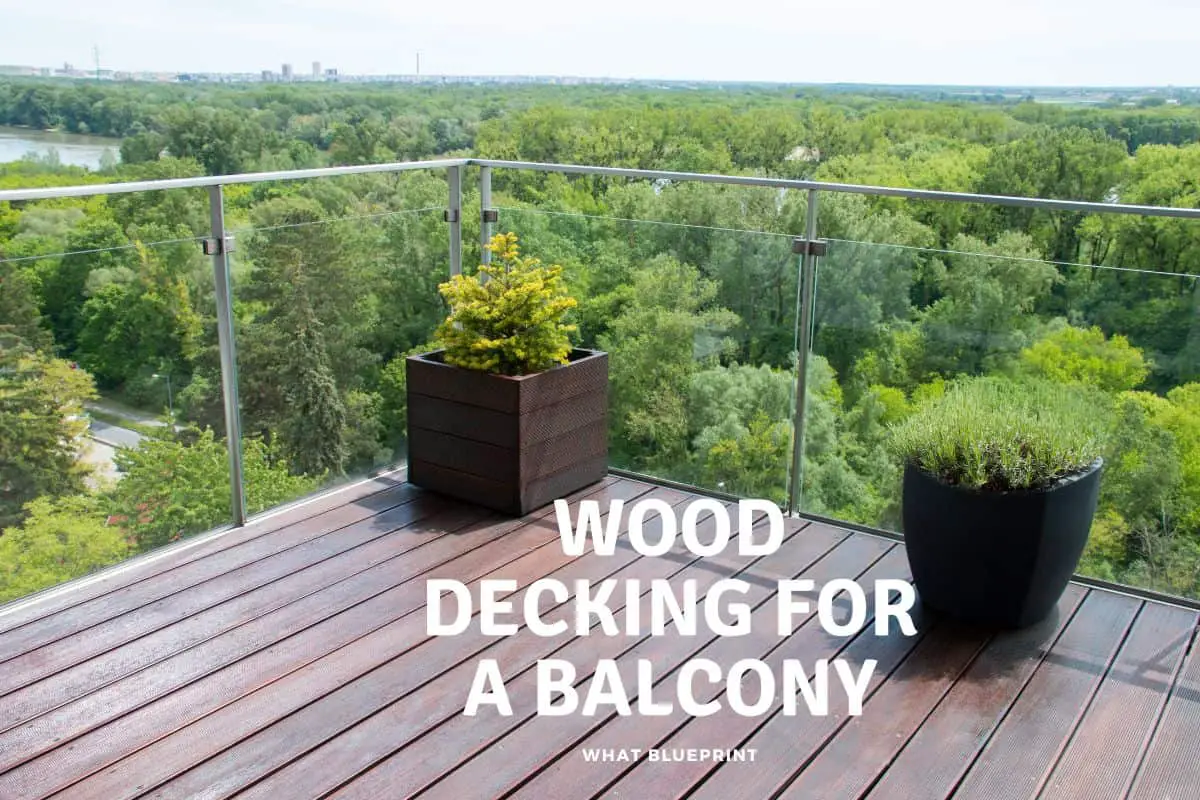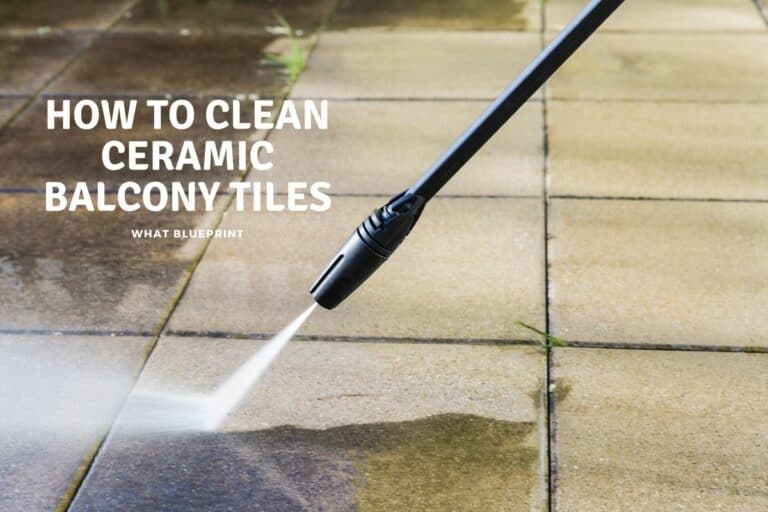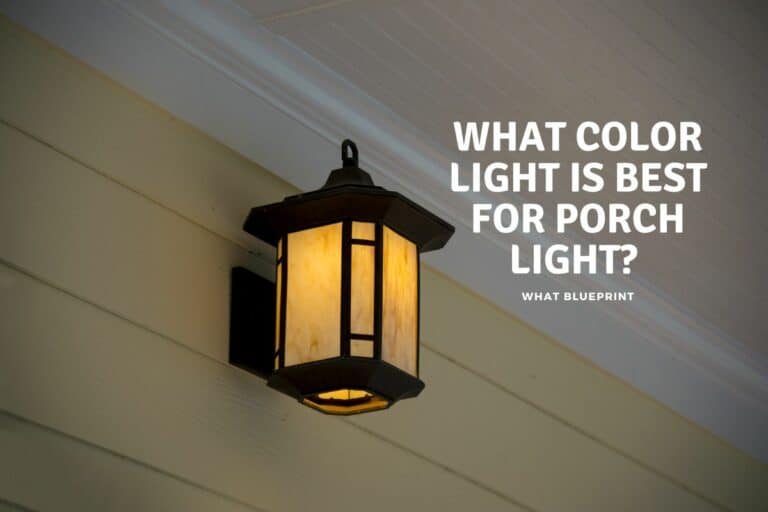Wood Decking For A Balcony
When it comes to decking for a balcony, there are so many different types of wood to choose from that it can be intimidating. Different types of wood have different prices, durability, aesthetic attributes, and upkeep requirements. Separating the types based on these characteristics will assist you in making a decision.
For balcony decking, cedar and Redwood are ideal choices. Both timbers have an attractive appearance and contain natural resins that make them exceptionally weather resistant. They are resistant to rot, termites, and powder beetles in general. They can last for a long time, whether or not they are treated.
While Cedar and Redwood are both great options for deck flooring that are relatively affordable, several other options on the market will make an equally good deck. You will need to weigh up the pros and cons of each before making your final decision.
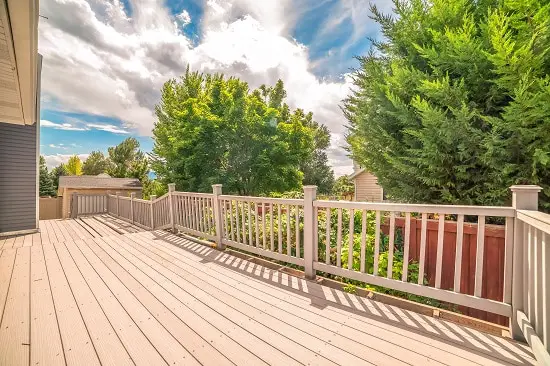
Wood Decking For Balconies
While there are nearly infinite types of wood available today, only a small number of them are suitable for decking. Most of the time, this is due to the rate at which wood rots.
Some types of wood deteriorate more quickly than others. This is due to the trees’ inherent qualities, making them less prone to rot. The Black Locust and the Bois D’Arc, for example, establish physical barriers within their wood.
This barrier, known as Tyloses, keeps moisture from entering the wood while keeping insects and other potentially dangerous organisms at bay.
The heartwood is always the finest choice when it comes to outdoor projects. The deepest sections of the tree, which tend to be stronger, make up the heartwood. On the other hand, Sapwood is often lighter in color and is made up of the stem and branch’s outermost sections.
Cedar, Redwood, and pressure-treated Douglas Fir or Southern Yellow Pine are some of the best woods for balcony decking. On the other hand, some oak species are excellent choices for decking for your outside spaces, decks, verandahs and of course balconies
.
Cedar Decking For Balconies
Cedar has several qualities that make it an excellent choice for outdoor decking. However, this wood has several qualities that make it less appealing. The majority of these, on the other hand, can be avoided.
Cedar is a very resistant wood that can be used for decking. This is due to the natural resins it creates, which eliminate the need to treat, stain, or paint the wood.
While the interventions above are not required, they will naturally extend the lifespan of the wood. If you want your cedar deck to endure three decades, it’s a good idea to get it treated properly.
Again, this isn’t required, making this a very appealing wood choice. Untreated or unfinished cedar will merely get greyer with age, despite its internal resins keeping it from decaying. If this grey style is to your liking, it can be very attractive to the sight.
There are several benefits to utilizing cedar for balcony decking. To begin with, cedar is quite soft and light, making it simple to work with.
Cedar is particularly resistant to rot, termites, and powder beetles because of its natural resins. This permits the wood to last for many years without being treated or maintained. As a result, cedar staining, treatment, and painting are essentially unnecessary.
While applying a treatment or surface coating to the wood will extend its life, the wood’s inherent oils will protect it for some years. It will begin to wear and lighten in color, finally becoming grey.
It is extremely unlikely to warp or sag due to the inherent qualities of the wood, and it is highly resistant to humidity. As a result, it’s a fantastic choice for most outdoor conditions where other wood forms wouldn’t last. This wood has a fifty-year lifespan potential.
Cedar is substantially less expensive than Teak in terms of price. It’s also lighter than Oak while still being strong and long-lasting. In essence, cedar is a low-cost, low-maintenance alternative to the more expensive alternatives on the market.
Cedar’s ability to effectively have embedded insulation is an intriguing – and highly valuable – characteristic. This embedded insulation is due to the presence of air pockets within the wood grain. This shields the wood from extreme temperature changes and helps to avoid expansion and warping.
Because cedar is often resistant to strong temperature changes. It can stay cold to the touch even when exposed to direct sunlight.
One feature of cedar that distinguishes it from other woods is its fragrance. This aroma originates from the wood’s inherent oils, which protect the wood while also repelling insects.
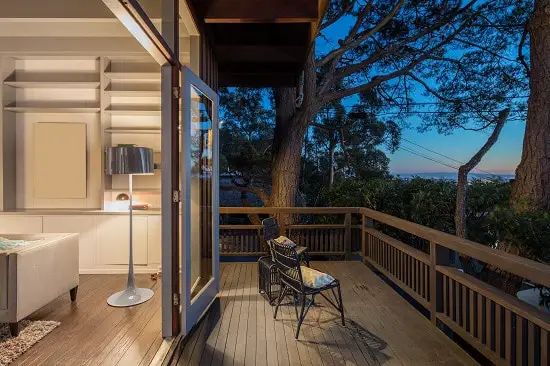
Oak Decking For Balconies
Oak is a high-quality hardwood that is ideal for decking. It is extremely tough and wear-resistant. This is primarily because it comes from slow-growing trees with a higher wood density due to their longer growth cycle.
Oak is a long-lasting wood that works well the outdoors. This is because the wood’s inherent resins protect it from insects, fungi, and the inevitable water damage that comes with being outside.
Oak is a grainy hardwood that comes in red and white variations. It is exceptionally sturdy and resistant to warping, making it an excellent choice for decking. Oak’s prominent grain (especially red Oak) helps it hide wear and tear better and if maintained well can be used on patios as well.
As a result, Oak is an excellent choice for decking. This wood is also a lot tougher than a lot of other woods. This means that denting, scratching, and abrasion is less likely. As a result, compared to many other types of wood, it requires less upkeep.
Oak is suitable for various exterior uses, including ladders, decks, fencing, pergolas, porches, and garages, due to its durability and density. It’s quite dense, and the natural resins make it more resistant to fungi, insects, and moisture.
European Oak has a lively coloring ranging from gold to medium brown and natural grain. Compared to its European equivalent, American White Oak has a light to tan-brown hue and straight grain.
Oak is well-suited to a minimalist Scandinavian aesthetic due to its naturally lighter tint. The lighter coloring also extends the life of the wood by making it less vulnerable to sun fade.
Oak has a tiger-stripe grain that is aesthetically pleasing. Staining can accentuate this grain even more, resulting in a two-tone appearance that some people dislike.
White Oak has a more delicate grain than red Oak with its golden tones. This is the best alternative if you want to prevent the two-tone effect that staining can occasionally cause.
Alternative Decking Timbers
Aside from white Oak, which has already been stated as a great choice, several other types of wood are also ideal for decking.
Teak is one of these options that outperforms all other wood varieties. Teak has a thick structure and a straight grain, making it extremely resistant to decay and insects. As a result, the Teak will not crack or deform over time. Teak includes natural oils that make it water-resistant.
Another great option is Redwood, which is naturally bug and moisture resistant. Redwood can also take any finish that is applied to it with ease. Remember that Redwood is pricey due to its scarcity and slow growth. However, Redwood is more common in some areas, making it a very cost-effective material in these instances.
Cypress is a beautiful wood with natural oils that protect it from insects and decay. If left untreated, Cypress will gradually weather to a silver-gray tint, which can be very beautiful. Cypress is a popular choice due to its light hue and lovely grain pattern.
Pressure-treated lumber will best fulfill your needs if you want to design a sturdy and affordable deck. Treated pine and more expensive options like cedar and Redwood will be an upgrade over regular pressure-treated lumber for the balcony or deck.
Keep in mind that these more expensive solutions are often used for their increased aesthetics and will not always outlast regular pressure-treated decking timber in terms of durability.
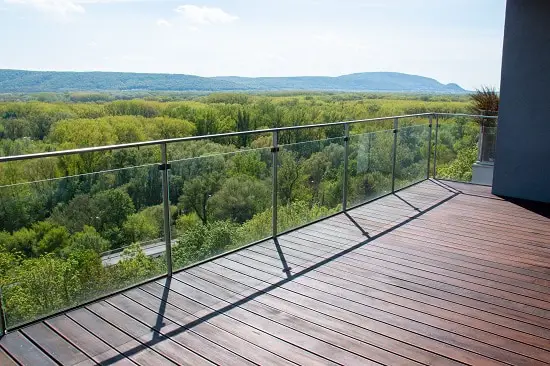
Conclusion
While there are countless types of timber available, only some are well-suited for a deck. Some decking timbers are far more expensive than others, so it will be well worth researching to figure out which option would serve your aesthetic and maintenance needs while fitting within your budget.

